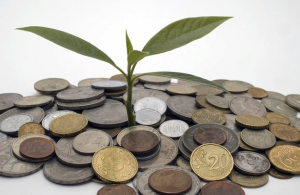[thrive_headline_focus title=”Socially Responsible Investing” orientation=”left”]
By Harshita Mira Venkatesh
 At a Symposium on Impact Investing held at the Vatican during the third week of June, Pope Francis appealed to sustainable investors to support social justice through their actions. According to the Pope: “It is important that ethics once again play its due part in the world of finance and that markets serve the interests of peoples and the common good of humanity.”
At a Symposium on Impact Investing held at the Vatican during the third week of June, Pope Francis appealed to sustainable investors to support social justice through their actions. According to the Pope: “It is important that ethics once again play its due part in the world of finance and that markets serve the interests of peoples and the common good of humanity.”
Changing ourselves as individuals is merely the first step. The second more imperative question to ask is: how can we make the companies and organizations around us behave and act in a systematically conscious manner for the advancement of society? As individuals some of us may feel overwhelmed by the scale of such a question. The answer was highlighted by Pope Francis during the symposium: we should make our investments count .
Impact investing or Socially Responsible Investing is when you not only invest in a corporation but also in the message they spread. For instance:
Starbucks is one of the most powerful coffee chains in the world. While they brew their signature coffee blends, they simultaneously aim to keep the underlying coffee bean environmentally equitable by using “Green Coffee” or fair trade coffee.
Ben and Jerry’s make wholesome dairy products and they also donate more than 7.5% of their pre-tax profit to various charities around the world.
Dell supports 4,615 charities around the world. In addition the Dell Social Innovation Challenge aims to mentor and nurture social entrepreneurs who have potentially socially consequential ideas.
Whole Foods may be our local grocer; internationally the organization supports 40,000 impoverished female micro-entrepreneurs.
The list goes on. It may be worthwhile to note that while these companies have achieved paramount corporate Socially Responsible Investing standards, they are also highly profitable enterprises. Socially Responsible Investing does not mean forfeiting gains, just choosing how to obtain them.
The inevitable question arises: do these organizations use their socially conscious efforts to mask their corporate greed?
None of these organizations are not 100% socially responsible in their actions. Yet they have taken stride to mitigate their harmful activities as well as promoting social causes. It is precisely this trend that we as social investors should campaign for.
There are a wide array of Socially Responsible Investing funds available offered by several well established fund managers as well as specialized advisers. These funds screen companies based on their ESG (Environmental, Social and Governance) standards. They simultaneously attempt to retain a diversified portfolio to mitigate the underlying risk.
-
The Calvert Social Index Fund is an index fund benchmarked on the Calvert Social Index® established to measure the performance of US-based sustainable and responsible companies. It has a diversified 699 issues in its current portfolio and a four star rating from Morningstar. The average return annually over a ten year period ranging from 4/01/04 to 3/31/14 for the A-shares is 6.15%, while the return of the Calvert Social Index during this period is 7.21%.
-
Another notable one is the Parnassus Fund which is benchmarked against the S&P 500. The average return of the A shares (post tax and excluding distribution fees) over a ten year period (01/01/04 to 12/31/2013) is 6.99% .The return of the S&P 500 by comparison for this period is 7.39%.
-
The iShares MSCI KLD 400 Social ETFis indexed to the MSCI KLD 400 Social Index (a free floating adjusted capitalization weighted index consisting of companies which comply with strict ESG standards). The fund’s performance since inception (11/14/06 to 12/31/13) has been 6.11%. The Index by contrast had a 6.65% annual average return over the same period.
-
The Green Century Balanced Fund contains a diversified portfolio of stocks and bonds. It is benchmarked against the S&P 500 Its return over the last ten year period has been 4.97% (04/01/04 to 3/31/14), compared with 8.34% for the S&P 500 over the same period.
These choices are not exhaustive. However, they demonstrate that there are Socially Responsible Investing choices that are valid from an investment standpoint. These Socially Responsible Investing options are diversified and varied. They are constructed in such a way that you need not sacrifice on returns in order to be socially conscious.
If you are interested in Socially Responsible Investing, take some time to research the possibilities and consult your Financial Planner regarding the investment options available and how they may fit in with your goals and your portfolio.
_____________________________________________________________________________
This blog post is contributed by Harshita Mira Venkatesh, a student at the University of Rochester majoring in Financial Economics and Applied Mathematics. Harshita is also a summer intern at Insight Financial Strategists LLC for the Summer of 2014. She intends to pursue a career in equity research analysis.
Note: All content provided on this blog post is for informational purposes only. We make no representation as to the accuracy or completeness of any information on this site or any information found by following any link on this site. The information is general in nature and may not be applicable or suitable to an individual’s specific circumstances or needs. Application to an individual situation may require considerations of other matters. The investments featured in this blog post are for illustration purposes only. No representation is made as to their suitability for any individual’s portfolio. If you have questions about the mutual funds described, please contact your investment professional.
